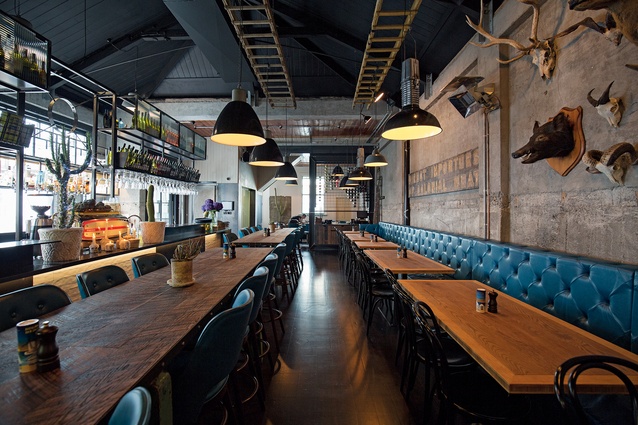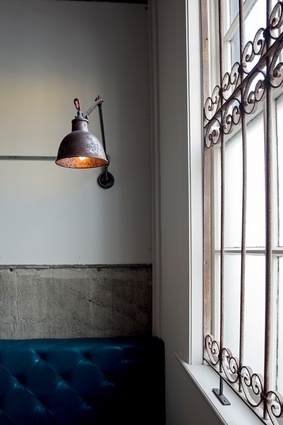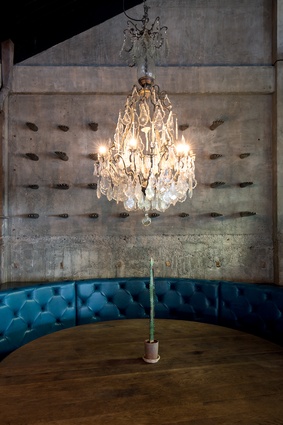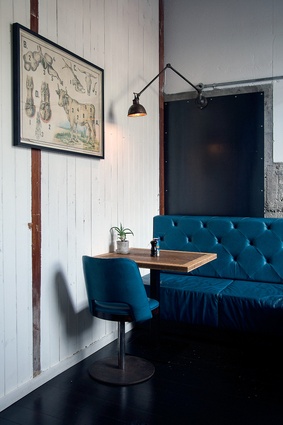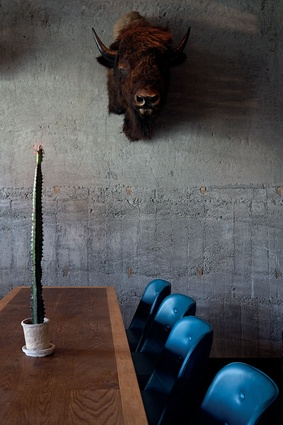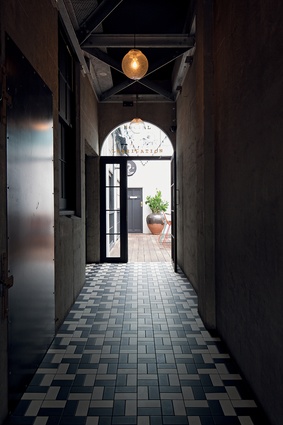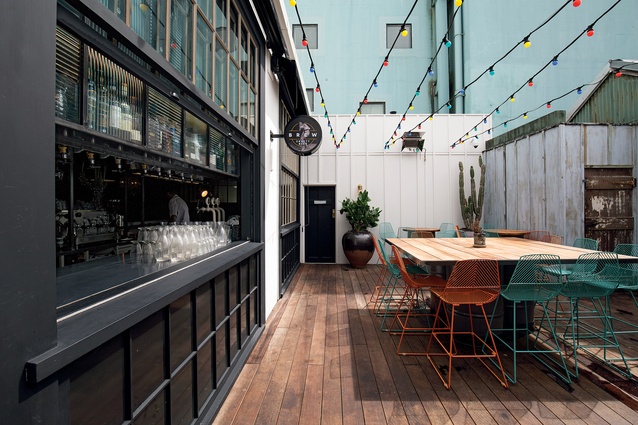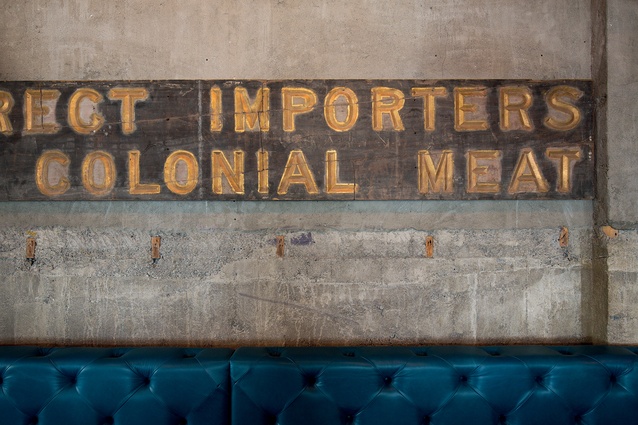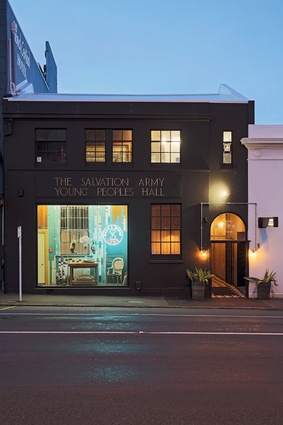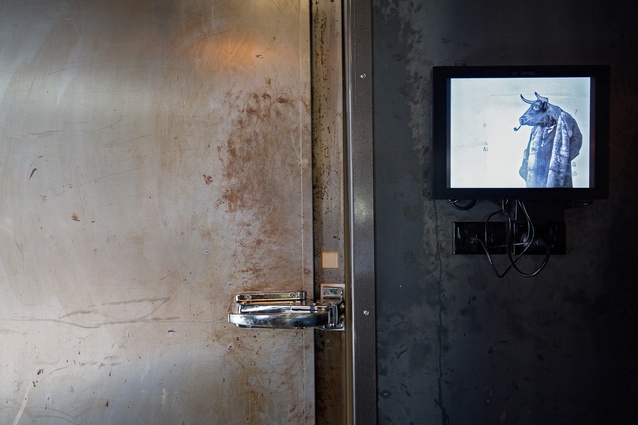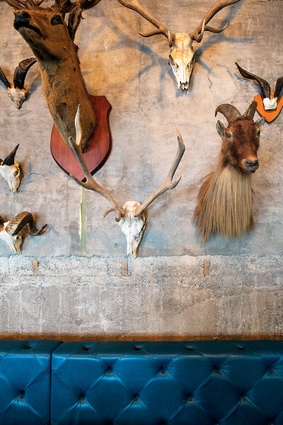Social Kitchen
The Social Kitchen evolved out of an informal, familial style of dining, which translated quite naturally to a collaborative approach to the design of New Plymouth’s newest restaurant. The owners, a group of four couples, wanted their clientele to experience the sort of meal they share amongst themselves – gathering in the kitchen with a glass of wine, chatting and cooking, with a bit of background music. It’s all very warm, relaxed and friendly.
The decor is also quirky; the owners’ diverse ideas were brought together and elaborated by designer Mike Marshall of 2.0 Design. Ideas that came up were often quite random, such as the glove moulds that Marshall and co-owner Craig Macfarlane noticed at a supplier in Auckland. Taxidermy animal heads (including a bison called Jeff) make unusual wall displays and reflect both the meaty South American-themed menu and the farming and hunting aspects of Taranaki culture.
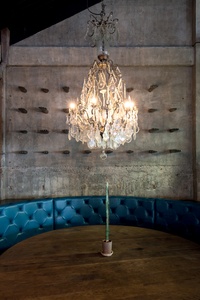
In an alcove at the end of the main dining room, an antique chandelier hangs above a large, round timber table with blue leather banquette seating. Hands – actually, the aforementioned glove moulds – jut out of the surrounding walls. These hands will eventually hold candles and they change what was once blank space into a head-turning composition. In a display window, various sausages and cured meats hang against a chain curtain impressed with the image of a pipe-smoking bull; the menu, illustrated with animals in vintage clothing, provides plenty of stimuli for conversation.
“It’s the sort of space where every time you return, you find something else,” Marshall says. “It’s not something you look at once and say – I get that, I understand that. You are almost anxious to get back and discover the next new thing. And it’s a good menu.”
While they have different individual styles, collectively the owners had a clear idea of the visual and culinary aesthetic that would appeal to the market, says Macfarlane. All have travelled extensively and worked in the hospitality industry, some for 20 years, both in New Zealand and overseas.
Craig and Kate Macfarlane ran their New Zealand business, Ozone Coffee Roasters, in London. “Over the past three to four years, we noticed a transition to informal dining and shared plates,” Macfarlane says. “Many spaces in the UK are quite cosy and intimate, and you can watch the chefs cook. Here at Social Kitchen, we tried to ensure there is a level of comfort and warmth as soon as you walk in.”
The main dining area of the 240m2 building is a tight, energetic space says Marshall. Long timber tables down the middle offer a communal dining experience. At 900mm they are slightly higher than normal dining tables but lower than bar leaners, enabling the high-energy in-and-out of lunchtime or an early dinner.
“These provide high-volume, high-turnover seating; if you are planning to stay a bit longer, there are banquette seats at normal dining height or the back dining room. It’s about catering for the different ways people want to eat,” Marshall says.
Outside, a Central American-style courtyard is lit with strings of coloured lights at night, and has been popular in summer. The courtyard connects to the bar and centrally placed kitchen through a servery window. The Mibrasa charcoal oven was the first in New Zealand at the time of opening in December 2014.
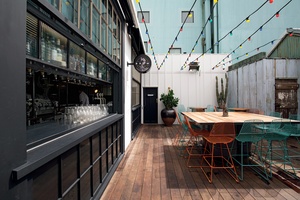
Visible dry and wet storage areas, and the illuminated units over the top of the bar and kitchen, are other significant features, Marshall says.
“The design has the advantage of immediacy and transparency. The chiller, meat window and dry stores are completely visible and everything is stored according to best practice. It’s all on show.”
Co-owner of the business Karen Pritchard says they wanted to honour the original building and to avoid an ostentatious fit-out. The walls were stripped back to the concrete finish of the original building, which had begun life as the Salvation Army citadel.
“We liked a raw, simple, unpretentious look. We chose substantial cutlery and plates and beautiful high-end wine glasses that reflect our personal taste.”
The restaurant’s style and menu seem to have hit the right spot, bringing together the elements of comfort and design, music and good food, and staff professionalism.
“I think a big part of successful hospitality design is having a good perception of what your clientele and the market is after,” Craig Macfarlane says. “We have considered every one of those elements and pulled them all together. I think Social Kitchen is the best thing we have done and the overall experience is top-notch.”

